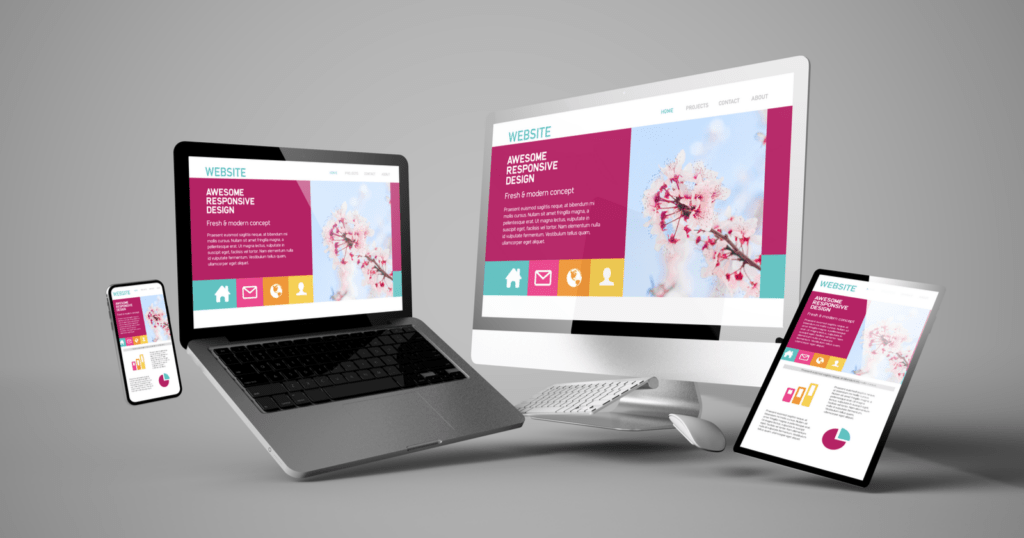Top Tips for Creating an Impactful Website Design That Converts
In today's digital landscape, the relevance of an impactful internet site design can not be overstated, particularly when it concerns transforming site visitors right into clients. To accomplish this, one must take into consideration a range of elements, including comprehending the target market, prioritizing user experience, and optimizing for mobile systems. Moreover, the calculated use engaging call-to-actions and a distinct aesthetic hierarchy plays a crucial role in assisting individuals through their journey. As we explore these crucial elements, it comes to be obvious that the success of your site pivots on greater than just visual appeal; it needs a thoughtful strategy to layout and performance.

Understand Your Target Audience
Recognizing your target market is fundamental to reliable internet site layout, as it prepares for creating an interesting customer experience. Recognizing who your users are, including their demographics, choices, and habits, enables developers to tailor the site's content, layout, and functionality to meet details requirements.
Performing extensive marketing research is important in this procedure. Surveys, interviews, and analytics can provide useful insights into user assumptions and pain points. By compiling this information, designers can produce individual personalities that stand for different sections of the target market, making sure that layout choices are educated and relevant.
Moreover, comprehending the target market aids in selecting ideal style elements such as color systems, typography, and imagery that reverberate with users. A site that speaks directly to its audience cultivates a sense of link and trust, encouraging longer sees and greater conversion rates.
Inevitably, a user-centered method to web site design not just enhances individual satisfaction yet also sustains company purposes by driving interaction and commitment. By prioritizing the demands and preferences of the target audience, an internet site can effectively offer its objective and achieve wanted results.
Prioritize Customer Experience
To improve the overall efficiency of a website, prioritizing customer experience (UX) is necessary (Website Design). A well-designed UX makes sure that site visitors can browse the site effortlessly, find info quickly, and engage with material meaningfully. This brings about boosted customer complete satisfaction and higher conversion rates
Begin by carrying out intuitive navigating. Menus needs to be logically structured, allowing users to locate vital locations of the website with marginal initiative. Consistency in layout components, such as color design and font styles, cultivates familiarity, which is crucial for preserving customer engagement.
Additionally, think about the filling rate of your web site. A hold-up of just a couple of seconds can lead to considerable drop-offs, as individuals are less likely to await a slow-loading page. Simplifying images and optimizing code can improve efficiency and retain site visitors.
By prioritizing user experience, you not just create an extra delightful atmosphere for visitors but likewise enhance your brand's reputation. Inevitably, an emphasis on UX is an investment in the lasting success of your web site.
Optimize for Mobile Instruments
Enhancing for smart phones is important in today's digital landscape, where a raising number of customers access internet sites with smartphones and tablets. A mobile-friendly browse this site layout not just enhances user experience however also plays a significant duty in improving internet search engine positions. To attain this, it is necessary to embrace a receptive design that instantly adapts to different screen dimensions and alignments.

Loading speed is an additional vital aspect; mobile individuals are usually much less person and expect fast access to information. By focusing on mobile optimization, you make certain that your site remains affordable and effectively involves a broader audience.
Use Engaging Call-to-Actions
A site's effectiveness usually pivots on its capability to guide visitors towards desired actions, making engaging call-to-actions (CTAs) crucial parts of design. CTAs act as the pivotal points that direct customers to engage with the website, whether that means buying, enrolling in a newsletter, or downloading and install a resource.
To develop reliable CTAs, clearness is paramount. Usage concise language that clearly connects the action you want the individual to take.
In addition, consider making use of directional signs, such as arrowheads or images, to guide customers towards these buttons. By concentrating on these elements, services can substantially boost individual interaction, driving conversions and inevitably achieving their internet site's objectives.
Focus on Visual Power Structure
Efficient web site layout relies greatly on a well-structured aesthetic pecking order that guides individuals through web content effortlessly. By arranging components in a fashion that focuses on details, designers can improve user experience and assist in decision-making. This includes using size, color, contrast, and spacing tactically to accentuate one of the most important elements of a website.
Making use of larger font styles for headings and subheadings develops a clear difference between different sections, allowing customers to check material effortlessly. In addition, using contrasting shades for switches and calls-to-action can capture user focus and urge interaction. Whitespace is an additional essential element; it avoids clutter and makes it possible for individuals to focus on key messages without distractions.
Images and graphics need to match the text while also adhering to the well-known hierarchy, enhancing the overall message (Website Design). Uniformity in style elements, such as color pattern and typography, more enhances the aesthetic power structure, making navigation intuitive

Final Thought
Finally, efficient site style requires an extensive find this understanding of the target audience, prioritization of user experience, and mobile optimization. The strategic Going Here use compelling call-to-actions and a well-defined aesthetic pecking order better boosts user engagement. By carrying out these principles, sites can attain higher conversion prices, making sure that style components not only attract site visitors yet additionally help with smooth navigation and communication. Eventually, a well-executed web site design serves as an essential element in driving user activities and attaining service goals.